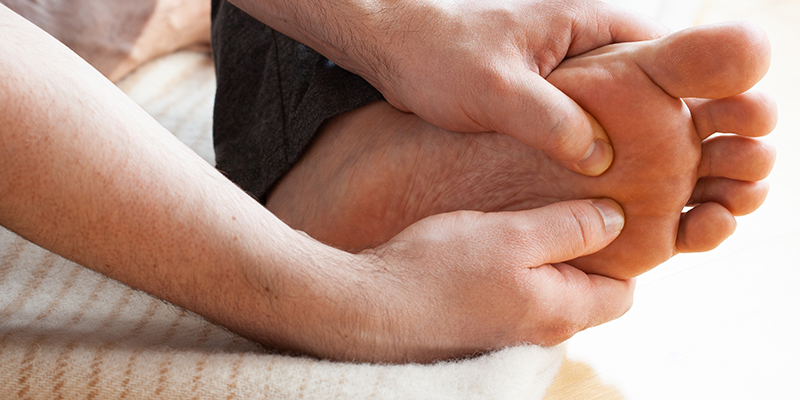
Estimated reading time: 4 minutes and 6 seconds
Flat Feet
Comprehensive Flat Feet Treatment at Aktif International Hospitals
Flat feet, also known as fallen arches or pes planus, is a common condition characterized by the flattening of the arches of the feet, resulting in the entire sole of the foot coming into contact with the ground. While flat feet may not always cause symptoms, some individuals may experience foot pain, discomfort, or other related issues. At Aktif International Hospitals, we offer comprehensive flat feet treatment options to alleviate symptoms, improve foot function, and enhance overall quality of life for our patients.
Frequently Asked Questions
What are flat feet, and what causes them?
Flat feet occur when the arches of the feet collapse, causing the entire sole of the foot to come into contact with the ground. This can happen due to various factors, including:
- Genetics: Flat feet can run in families, indicating a genetic predisposition to the condition.
- Weak or tight muscles: Weak or tight muscles in the feet and lower legs may contribute to the development of flat feet.
- Injury or trauma: Previous foot injuries, fractures, or damage to the tendons and ligaments supporting the arches can lead to flat feet.
- Overpronation: Excessive inward rolling of the feet when walking or running (pronation) can contribute to the development of flat feet.
- Aging: As people age, the supportive structures of the feet may weaken, leading to changes in foot shape and function.
Who is at risk of developing flat feet?
Flat feet can affect people of all ages, but certain factors may increase the risk of developing the condition, including:
- Family history: Having a family member with flat feet or related foot problems may increase the likelihood of developing the condition.
- Age: Flat feet can develop at any age, but the risk may increase with age as the supportive structures of the feet weaken over time.
- Gender: Flat feet are more common in women than men, although the reason for this difference is not fully understood.
- Obesity: Excess body weight can put additional stress on the feet and increase the risk of developing flat feet or exacerbating existing symptoms.
What are the symptoms of flat feet?
Flat feet may not always cause symptoms, but some individuals may experience:
- Foot pain: Pain or discomfort in the arches, heels, ankles, or along the inner side of the foot.
- Fatigue: Tiredness or achiness in the feet, especially after standing or walking for long periods.
- Swelling: Swelling or inflammation in the feet or ankles, particularly after prolonged weight-bearing activity.
- Difficulty with footwear: Difficulty finding comfortable shoes or experiencing rubbing, chafing, or blisters due to foot misalignment.
How is flat feet diagnosed?
Flat feet are typically diagnosed through a physical examination by a healthcare provider, including an assessment of foot shape, arch height, and gait pattern. Additional diagnostic tests may include:
- X-rays: Imaging tests such as X-rays may be ordered to evaluate the structure of the feet and identify any bony abnormalities or misalignments.
- Foot pressure analysis: Computerized gait analysis or foot pressure mapping may be used to assess foot function, weight distribution, and walking patterns.
What are the treatment options for flat feet?
Treatment for flat feet aims to relieve symptoms, improve foot function, and prevent complications. Treatment options may include:
- Supportive footwear: Wearing supportive shoes with adequate arch support and cushioning can help reduce discomfort and provide stability for flat feet.
- Orthotic devices: Custom-made or over-the-counter orthotic inserts or arch supports can help support the arches and improve foot alignment.
- Physical therapy: Exercises, stretches, and strengthening techniques prescribed by a physical therapist can help improve foot strength, flexibility, and alignment.
- Weight management: Maintaining a healthy weight can help reduce stress on the feet and alleviate symptoms associated with flat feet.
- Medications: Over-the-counter pain relievers or anti-inflammatory medications may be recommended to alleviate foot pain and inflammation.
Trust Aktif International Hospitals for Comprehensive Flat Feet Treatment
At Aktif International Hospitals, we understand the impact of flat feet on foot function, comfort, and quality of life. Our team of experienced orthopedic specialists, podiatrists, and physical therapists offers personalized treatment plans tailored to each patient’s unique needs and goals. Whether you require supportive footwear, orthotic devices, physical therapy, or other interventions for flat feet, you can trust Aktif International Hospitals to provide compassionate care and support throughout your journey to better foot health. Schedule your consultation with us today and take the first step towards relieving pain and improving function with flat feet treatment at Aktif International Hospitals.
Author: Tuncay Akalan


 TR
TR